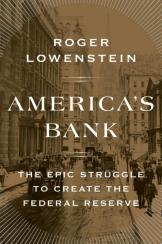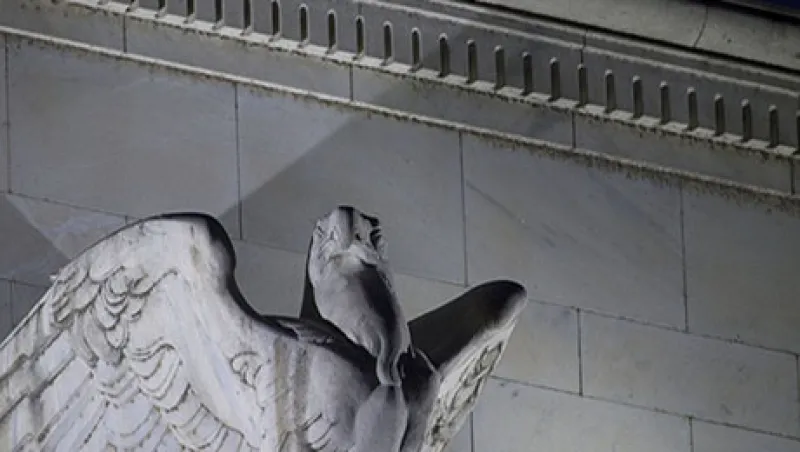
It’s hard to fathom today, but Americans once considered the very notion of a central bank scarier than the alternative, an unfettered financial system left to careen chaotically. Before the founding of the Federal Reserve in 1913, banks failed at the slightest panic. The U.S. currency system was a mess. Check clearing was a crapshoot. Mortgages scarcely existed.
The financial markets of the early 1900s were positively quaint compared with today’s complex world of derivatives, hedge funds and algorithmic trading. Yet there is at least one commonality between today’s economy and that of a century ago: skepticism of Wall Street.
Writes Roger Lowenstein, a financial journalist and chair of the board of directors at Sequoia Fund, in America’s Bank: The Epic Struggle to Create the Federal Reserve, his latest book: “In America, such a bank did not seem natural. It reawakened Americans’ primal anxieties, the colonials’ fear that their hard-won liberties would be crushed by a far-off king.”
Lowenstein delivers a day-by-day account of the long-secret meeting on Georgia’s Jekyll Island, where in 1910 an influential senator and a prominent banker hatched the plan for the institution that would become the Federal Reserve, the world’s most powerful central bank. Financier J. Pierpont Morgan, who spearheaded the coalition of banks that saved the U.S. economy from the Panic of 1907, arranged for Rhode Island Republican Senator Nelson Aldrich, German émigré banker Paul Warburg and their small entourage to be the only guests at the exclusive Jekyll Island Club resort. The conspirators disguised their journey as a hunting trip. As part of the masquerade, Warburg bought a rifle and shells he didn’t know how to use. Warburg and Aldrich managed to keep their clandestine meeting a secret for two decades.
“Thanks to its secrecy and its glittering cast, the cloak-and-dagger retreat would give rise to legions of conspiracy theories,” Lowenstein writes. “For gold bugs, anti–Federal Reserve zealots, and flat-out cranks, the 1910 escapade would come to assume mythic significance.”
In a nod to Americans’ fear of centralized control, Aldrich and Warburg proposed 12 central banks to be governed by a central authority, mirroring the federalist structure of the U.S. government. Despite such compromises, it would take a few years of intense lobbying and acrimonious debate before the Fed was created. To avoid the disdain of the U.S. public, Warburg and Aldrich scrupulously avoided the phrase “central bank” and instead called their organization “the National Reserve Association.”
Wall Street banks supported the Jekyll Island plan, in part because it would allow them to do business overseas. But Americans were in the midst of “an anti–Wall Street and anti-banking fever,” Lowenstein writes, and the very notion of a central bank remained so politically fraught that Wall Street support would have killed the plan. The financial sector masked its lobbying effort by contributing liberally to the National Citizens’ League for the Promotion of a Sound Banking System, ostensibly a grassroots organization of businesses based in the Midwest. Main Street support was politically palatable, though the imprimatur of Wall Street would have spelled doom.
Whereas the Fed’s very existence remains a source of suspicion for some on the political fringe, Lowenstein’s account hews to mainstream thinking about the Fed. He readily accepts the need for a central bank, and he argues that the machinations that led to its creation were the only way to drag the U.S. economy into the modern world. The European powers had created central banks decades or even centuries earlier, a move that banished banking panics. “In 12 short months, [President Woodrow] Wilson had wrung from a [Democratic] party steeped in devotion to Andrew Jackson, and to the crudest anti-banking stereotypes, the filaments of a central bank,” Lowenstein writes.
A century since its inception, the Fed has become so deeply ingrained that it’s hard to imagine a time when it didn’t exist. Investors will be hard-pressed to find modern-day lessons in Lowenstein’s chronicle; however, their breathless anticipation of the Fed policy meeting this week is testament to the central bank’s crucial role in the global economy.
Get more on macro.






